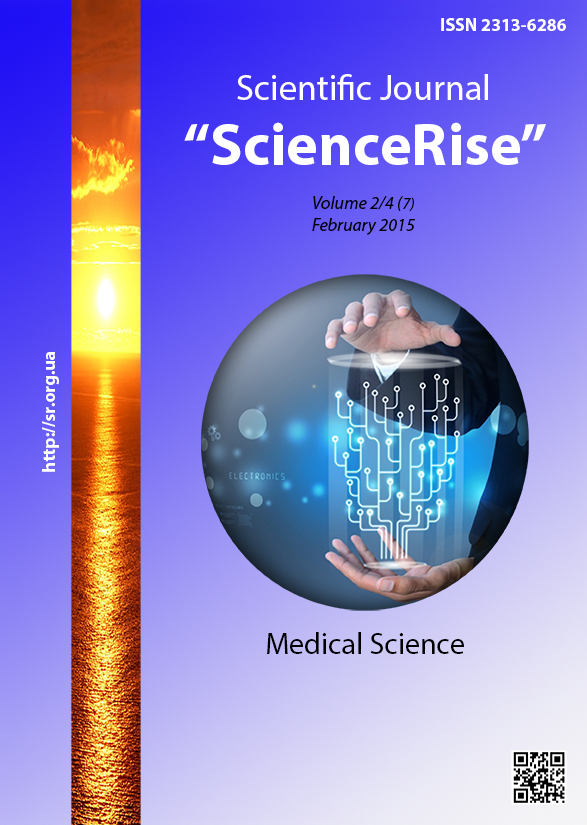Анализ ведущих компонентов производственной среды транспортной отрасли
DOI :
https://doi.org/10.15587/2313-8416.2015.37411Mots-clés :
условия труда, техника безопасности, трудящиеся, предприятия разных форм собственностиRésumé
Проанализировано ведущие компоненты производственной среды (техника безопасности, условия труда, организационно-управленческая) трудящихся транспортной отрасли на предприятиях разных форм собственности по результатам социологического опроса. Выявлена достоверная зависимость их распространенности от форм собственности предприятий, функционального назначения транспортных средств и региона пребывания
Références
Yzmerov, N. F. (2008). Hlobal'nыy plan deystvyy po okhrane zdorov'ya rabotayushchykh na 2008-2017 hh.: puty y perspektyvы realyzatsyy [Global plan of operating under a health care workings on 2008-2017 yy. : ways and prospects of realization]. Medytsyna truda y promishlennaya эkolohyya, 6, 1–9.
Matyukhyn, V. V., Elyzarova, V. V., Shardakova, E. F., Yampol'skaya, E. H. (2009). Faktori ryska v razvytyy funktsyonal'nikh narushenyy u rabotnykov fyzycheskoho truda [Risk factors in development of functional violations for the workers of manual labour]. Medytsyna truda y promishlennaya эkolohyya, 6, 1–6.
Tsurkan, V. (2011). Mekhanizm formuvannya yakisnoho vyrobnychoho seredovyshcha [Mechanism of forming of high-quality production environment]. Sanitarno-epidemiolohichna sluzhba, 1, 24–25.
Anderson, V. P., Schule, P. A., Sestito, J. (2010). Occupational fatalities, injuries, illnesses and related economic loss in the wholesale and retail trade sector. American Journal of Industrial Medicine, 53 (7), 673–685. doi: 10.1002/ajim.20813
Czapka, M., Kontny, U. (2011). Legal and economic consequences of the accidents at work and occupational diseases in France. Ukrayins'kyy zhurnal z problem medytsyny pratsi, 2, 68–77.
Kundiyev, Yu.I., Nahorna, A. M. (2007). Profesiyne zdorov"ya v Ukrayini. Epidemiolohichnyy analiz [A professional health inUkraine]. Kiev: Avitsena, 396.
Occupational Safety and Health Statistics Bulletin (2013). Available at: http://www.labour.gov.hk/eng/osh/pdf/Bulletin2012.pdf
Kundiyev, Yu. I., Nahorna, A. M., Chernyuk, V.I.(2005). Stratehiya zabezpechennya bezpechnykh umov pratsi i zberezhennya zdorov"ya pratsyuyuchykh v Ukrayini na 2006-2010 roky [Strategy of providing of safe terms of labour and saving of health of workings is inUkraineon 2006-2010 yy.]. Ukr. zhurn. z probl. medytsyny pratsi, 3/4, 4–10.
World Health Organization (2013). Global health observatory Data Repository. Available at: http://apps.who.int/gho/data/view/main
Téléchargements
Publié-e
Numéro
Rubrique
Licence
(c) Tous droits réservés Олена Миколаївна Крекотень 2015

Cette œuvre est sous licence Creative Commons Attribution 4.0 International.
Our journal abides by the Creative Commons CC BY copyright rights and permissions for open access journals.
Authors, who are published in this journal, agree to the following conditions:
1. The authors reserve the right to authorship of the work and pass the first publication right of this work to the journal under the terms of a Creative Commons CC BY, which allows others to freely distribute the published research with the obligatory reference to the authors of the original work and the first publication of the work in this journal.
2. The authors have the right to conclude separate supplement agreements that relate to non-exclusive work distribution in the form in which it has been published by the journal (for example, to upload the work to the online storage of the journal or publish it as part of a monograph), provided that the reference to the first publication of the work in this journal is included.

